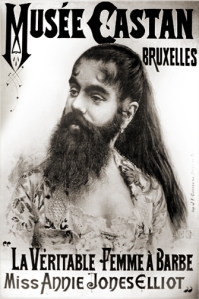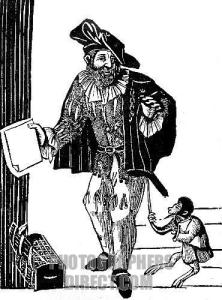Unless there are particular reasons, for example a skin condition, or a faulty razor, shaving today is usually a pretty mundane – if not a pleasant – experience. Indeed, the rise of traditional barbershops over the past few years, offering shaving as an experience, together with an increasingly elaborate range of rituals, head massages and exotic products, makes it almost a form of beauty treatment for men. But what was shaving like 300 years ago? What did it feel like to be shaved with a Georgian razor?
Before the end of the 18th century, and indeed for many men for quite a long time afterwards, the mainstay of shaving was the barber. Barbers were readily available across Britain, in shops of various size and quality, or sometimes operating with a couple of chairs in the backrooms of their houses. With shaving paraphernalia expensive to buy and bothersome to maintain, it was often simply easier, and potentially much cheaper, to simply go to the barber. Here men could not only have a shave, a haircut, have their earwax removed, tongues scraped and boils lanced, but could meet with other men to gossip, eat and drink and generally shoot the breeze.

But if all this sounds cosy and convenient, there is plenty of evidence to suggest that the shave itself could be a far less than comfortable experience.
For a start, much depended on the quality and state of repair of the razor. Early 18th century races common razors were made from a type of steel that could be brittle and, unless regularly maintained, could quickly lose its edge. Inventories of higher-end barber’s shops in the 17th and 18th century sometimes show whole cases of razors, along with sharpening strops and hones, meaning that their use could be rotated. Smaller barber businesses, however, might only have a couple of razors…and if these blunted, and with a queue forming, corners (and faces!) were likely to be cut. Whilst a sharp razor cut cleanly through beard hairs, a blunted one rasped away at the layers of skin, literally scraping the hair rather than cutting it.

Some comfort could be derived from the type of shaving soap that the barber used. Like razors, the quality of these varied dramatically. Whilst high end soaps had unctuous, perfumed creamy lather, which helped the razor glide across the face and neck, there were complaints about the lather of cheaper soaps, that reportedly just fell off the face, doing little good to the poor punter in the chair.
Another important consideration was whether the shave was performed with hot or cold water. There were heated debates amongst razor makers in the 18th century as to which was more suitable. Some thought that hot water causes the razor to expand, increasing its efficiency. Others protested that it was cold water that better suited the minute particles in the razor. Again, for the poor man in the chair, this could be a crucial decision. Whilst being shaved with hot water can be pleasant, a cold water shave is something more to be endured than enjoyed!
Once the shave had been completed, the customers face would be towelled dry, and he would be sent on his way. Depending on the nature of the ordeal, he was by this stage either fresh-faced and clean-shaven or cut to ribbons and sporting a conspicuous and painful shaving rash. In the latter case, unfortunately, there was little remedy. Domestic remedy collections show no evidence of specific preparations for shaving rashes…or even any recognition of the condition. With no commercially available after-shave balm or lotion, the best a man could hope for would be to apply one of the many soothing skin remedies that existed for redness or swelling in the face.
Perhaps the best way to view contemporary attitudes towards being shaved by the barber is through depictions in 18th century satirical cartoons. Whilst these give us extremes, rather than typical experiences, they tell us enough about what could go wrong to be able to understand the potential plight of our ancestors!
For a variety of reasons, barbers were particular targets for the pensions of cartoonists. The incessant chatter of the barber, for example, attracted particular criticism. Cartoons often poked fun at the dangers of being at the hands of a razor-wielding barber, so absorbed by his own conversation that he risked accidentally injuring the customer.
In Rowlandson’s ‘Damn the Barber’, the customer in the chair winces as the barber holds him by the nose, about to shave him. On the left an apprentice holds a mirror to a man, to show the results of his work. The customer has his fingers in his ears, perhaps removing hair and lather…but also perhaps blocking out the barber’s chat.

A worse fate is about to befall the poor punter at the hands of a barber in this second Rowlandson cartoon, so absorbed in his diatribe about news from Amsterdam that he fails to notice his razor blade sinking into his customer’s nose. “Halloh! You sir!” cries the man “what are you about? Are you going to cut my nose off?” (Lewis Walpole.

Perhaps one of my favourite of all satirical images of shaving, however, and the one perhaps most suggests the discomfort that could be visited upon the 18th-century shavee, is this 1804 etching of a barber shaving a man in his shop. As the barber’s blunted razor rasps across the poor man’s chin he cries out in pain…”Zounds! How you scrape!”.









































